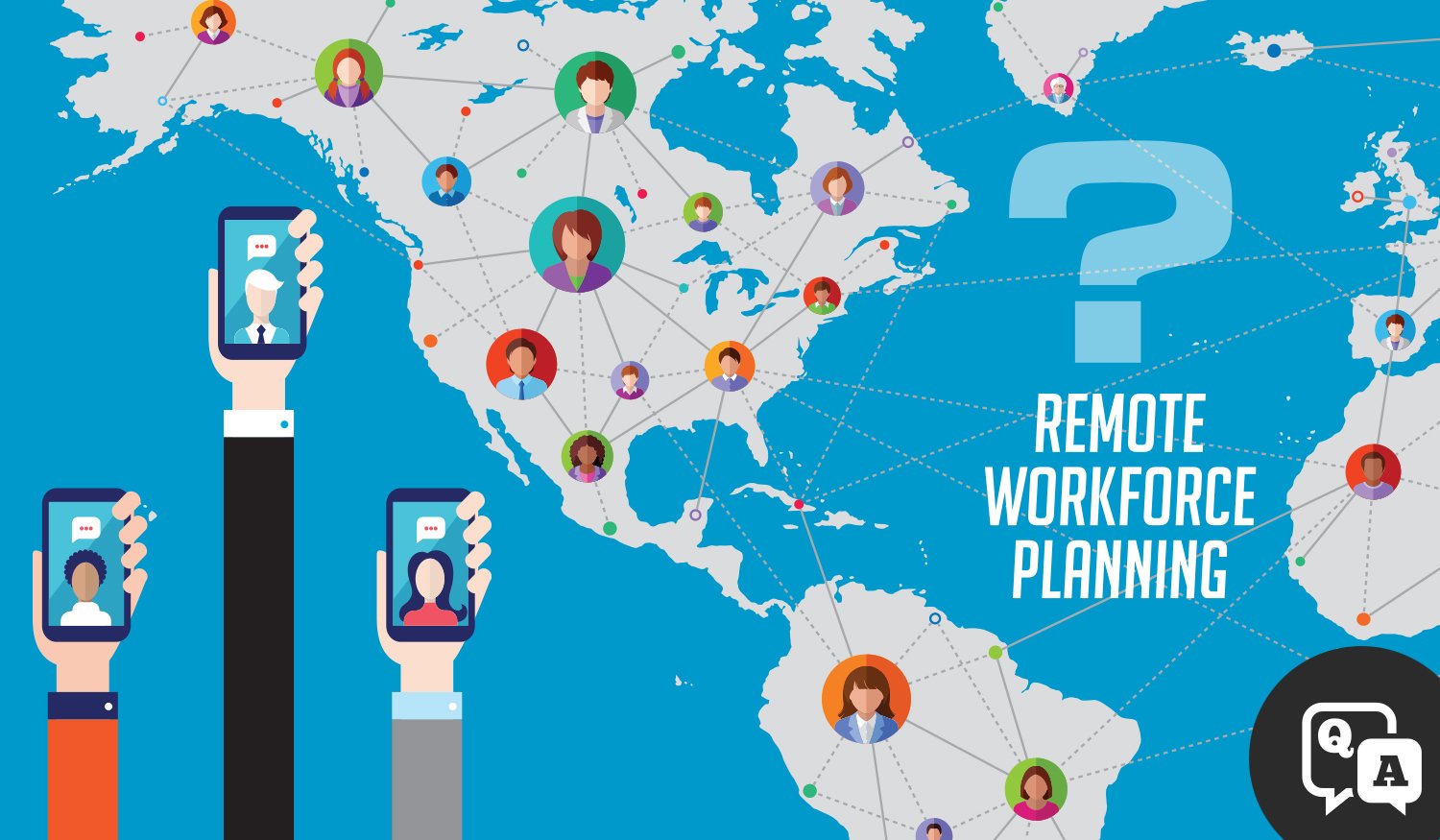
The Remote Work Assessment and Remote Work Checklist below are no substitute for a comprehensive disaster recovery plan. However, they may provide a beginning point for companies to plan for remote working or, if already engaged, for optimizing and improving productivity.
Disaster planning is one of the most underappreciated aspects of executive leadership – until a disaster strikes. The current situation with COVID-19 is different from familiar disasters such as hurricanes, tornadoes, and earthquakes regarding property loss and damage; however, its growing impact on our daily lives is becoming just as profound and disruptive.
Traditional disaster planning considers remote workforce planning from the perspective of restoring communication, normal office functions, and employee productivity as quickly as possible. In the current situation, with employees being told to work from home in large numbers, company leaders are facing new challenges. Deciding to send employees home to work remotely is one thing, actually executing and making it happen efficiently and productively is quite another.
For some companies, remote working simply means buying extra VPN licenses and deploying to end users. However, for anyone other than experienced road warriors (who are used to the remote working paradigm), this move can be woefully inadequate. Working remotely – from home, not from the local coffee shop – will be completely new to most people being asked to do so and gaps in planning, discipline, communication, and technology infrastructure are quickly being encountered.
Questions such as the following are suddenly relevant:
- How do we communicate without the familiar office phone system and company phone directory readily available?
- How do we conduct employee meetings now that we’re no longer together in the office?
- Do all employees have the same understanding of communication availability and responsiveness, work schedule, and work output as the executive team?
- Are home computers and the Internet service from employee homes adequate for remote working? What kind of work can be conducted given these potential limitations?
The Remote Work Assessment and Remote Work Checklist below are no substitute for a comprehensive disaster recovery plan. However, they may provide a beginning point for companies to plan for remote working or, if already engaged, for optimizing and improving productivity.
Remote Work Assessment — What to Consider.
- Chain of command
- Does an organization chart or other formalized document that identifies the chain of command at least 5 levels deep exist?
- Is it updated and readily available for reference?
- Are company phone lists updated to include personal cell numbers of all employees?
- Remote work policy
- Does a written policy that outlines management expectations for employees working remotely exist?
- Has it been updated recently and presented/discussed with employees?
- Determine PTO policy adjustments and company position related to remote working
- Does a written policy that outlines management expectations for employees working remotely exist?
- In general, anyone who performs a majority of their work at a desk with a computer or telephone can be a candidate for remote work
- Identify all positions that fit this general description
- Identify all positions and tasks that require performance and completion from within the office, warehouse, or shop floor
- Develop action plans for both categories of work and employee position
- Does the capability exist for managers or group leaders to conduct remote meetings with employees (remote meeting software or other tools)?
- If yes, who has access to these tools and what are the licensing counts specific to usage?
- Are these tools cloud-based?
- Are these tools dependent on on-premise servers?
- Plan accordingly based on the answers
- Telephone calls
- Do employees know how to check office-based voicemail remotely?
- Are instructions available for checking office-based voicemail remotely?
- Does the existing telephone system have the capability to reroute calls to external phone numbers (cell phone, for example)?
- Has this been done? Who will do it?
- Email
- Do employees know how to check and respond to company email while away from the office?
- Paperwork processing
- If paperwork needs to be scanned to facilitate remote work, who will perform the scanning and what will the work schedule be?
- Is training required to enable document scanning?
- Traditional mail
- Who will be prepping mail for USPS? What is the in-office work schedule?
- Shipping/receiving
- Who will receive and ship packages? What is the in-office work schedule?
- City governments
- Public safety
- With regard to general work-from-home initiatives, who will receive and dispatch emergency calls? Will this occur remotely or from within the dispatch center
- City council (applies to city government clients)
- What will the policy be for public meetings?
- Are the tools in place to conduct remote meetings
- Are remote meetings viable?
- How will council decisions be handled during this time?
- City services
- Will any city services be suspended?
- How will the city notify the citizens of developments?
- What positions roles and positions lend themselves to remote working?
- Public safety
- Message management
- Consider whether or not it is appropriate to post the remote work status of your company on your company website and in voicemail messages during this time
- Will there be delays in responses to customer messages and will company products and services be delayed or suspended?
Remote Work Checklist — How to Begin.
- Secure remote access to centralized computing resources
- VPN licensing – adjust as necessary to support remote workers
- Reconcile existing licensing with requirements to support anticipated growth
- Internet bandwidth
- Adjust as necessary to support remote workers
- Will current carrier allow for a short-term bandwidth expansion without a binding commitment?
- Remote work policy
- Provide to employees and review from the executive or manager level to ensure that proper expectations are set
- Home office planning
- Identify employees who have company laptops that can work remotely
- Identify employees who will be working from home using their own computers
- Provide instructions for connecting to the company network and company data from a home office using personal computers
- Determine and manage the threat to company resources posed by inadequate virus and malware defense on home computers
- Office 365
- Provide employees with instructions for using Office 365 when working remotely
- Are new data storage processes and workflows required?
- If yes, educate end users accordingly
- Online Education/TechCare University
- Provide employees with instructions for accessing Online Education/TechCare University online training resources
- If a company intranet, message board, or knowledge base is available, make sure that all employees know how to access it remotely
- Voicemail
- Provide employees with instructions for checking office-based voicemail while working remotely
- Meeting schedules
- Determine if a regularly-scheduled virtual meeting is needed to keep remote workers focused and updated
- Determine if standing/existing meetings will be converted to virtual meetings and continue or be suspended.
- Notify meeting participants accordingly
- Technical support
- Provide all employees with instructions for reaching internal IT staff or external technical support resources
- Human resources
- Keep human resource employees updated regarding company policy and notify the general workforce of company policies related to remote work, standard operations, and getting their questions answered
Planning for a remote environment is crucial. Whether you're hoping to optimize productivity for a remote workforce, or just getting started, we'd love to visit to discuss how a Unified Communications plan can help your organization.



